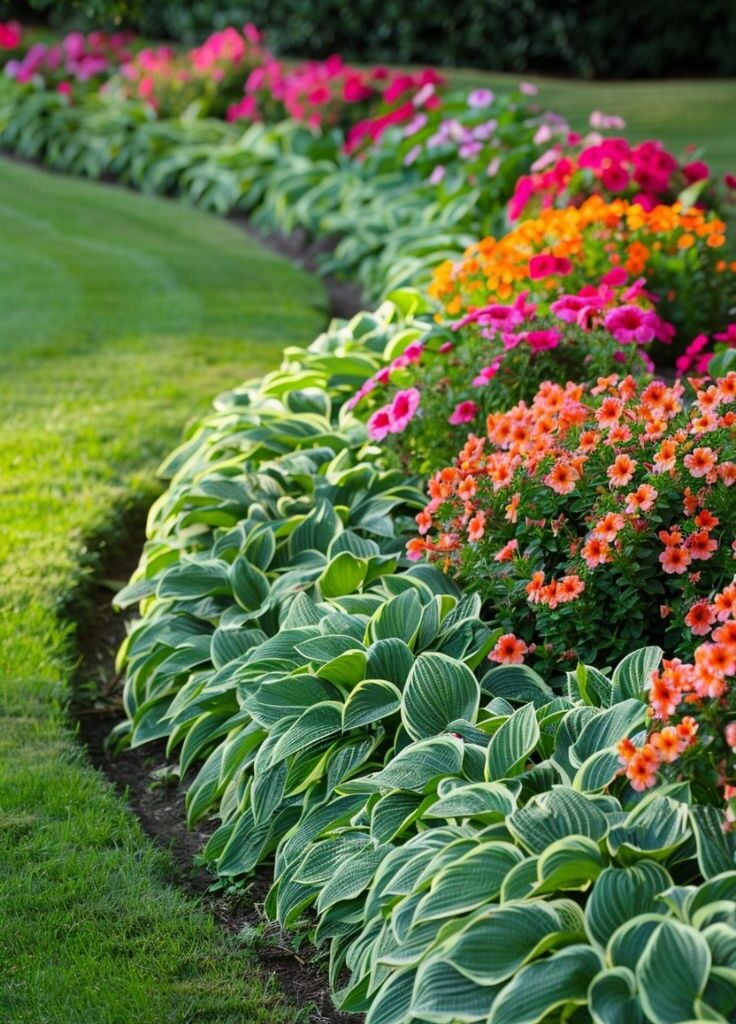Creating a flower garden is a rewarding experience, bringing beauty and tranquility to your outdoor space. However, not all gardens are perfectly square or rectangular. Embracing an irregularly shaped flower garden presents a unique opportunity to showcase your creativity and design a truly stunning landscape feature. From carefully selecting plants to strategically placing pathways and focal points, designing an unconventional garden shape can transform an ordinary yard into an extraordinary oasis. This guide will explore the considerations and techniques for crafting a breathtaking irregularly shaped flower garden that reflects your personal style and enhances your property’s charm.
Understanding Irregular Garden Shapes
Irregularly shaped gardens often present both challenges and advantages. They might be dictated by existing landscape features like trees, rocks, or property lines. Instead of viewing these constraints as limitations, consider them as opportunities to create a dynamic and visually interesting space.
Benefits of Irregular Shapes
- Natural Aesthetic: Irregular shapes often mimic natural landscapes, creating a more organic and relaxed feel.
- Visual Interest: Unconventional shapes draw the eye and add a sense of intrigue to the garden.
- Unique Design Opportunities: Irregular shapes allow for creative plant arrangements and the incorporation of unexpected features.
Planning Your Irregular Garden Design
Careful planning is essential for a successful irregularly shaped flower garden. Consider the following factors:
- Sunlight: Assess the amount of sunlight each area of the garden receives throughout the day. This will influence your plant selection.
- Soil Type: Determine the soil type in different areas of the garden and amend it as needed to support the plants you choose.
- Drainage: Ensure proper drainage to prevent waterlogging and root rot.
Choosing the Right Plants
Select plants that thrive in the specific conditions of your garden and complement the overall design. Consider factors such as:
- Plant Height and Spread: Choose plants that will mature to the appropriate size for their location.
- Color Palette: Create a harmonious color scheme that appeals to your personal taste.
- Bloom Time: Select plants with staggered bloom times to ensure continuous color throughout the growing season.
Creating Pathways and Focal Points
Pathways and focal points are essential elements in any garden design. In an irregularly shaped garden, they can help to guide the eye and create a sense of flow.
Pathways
Choose pathway materials that complement the overall aesthetic of the garden. Options include:
- Gravel
- Stepping stones
- Mulch
Focal Points
A focal point is a visual element that draws the eye and adds interest to the garden. Examples include:
- Statues
- Water features
- Unique plants
Factoid: The concept of “negative space” is important in garden design. Leave some areas open to create a sense of balance and prevent the garden from feeling cluttered.
Maintaining Your Irregular Flower Garden
Regular maintenance is essential for keeping your irregularly shaped flower garden looking its best. This includes:
- Weeding
- Watering
- Fertilizing
- Pruning
FAQ: Irregular Flower Garden Design
Q: How do I deal with awkwardly shaped areas in my garden?
A: Embrace the irregularity! Consider using these areas for unique features like rock gardens, herb gardens, or small water features.
Q: What are some good plants for an irregularly shaped garden?
A: Consider incorporating a mix of textures and heights. Groundcovers, ornamental grasses, and flowering perennials are all good choices.
Q: How can I make my irregularly shaped garden look bigger?
A: Use curving pathways and varying plant heights to create the illusion of depth. Avoid straight lines and symmetrical arrangements.
Key improvements and explanations:
- Heading Hierarchy: Uses `
`, `
`, and `
` tags to create a clear heading structure.
- Uniqueness: The content is original and focuses on the challenges and opportunities of designing an irregularly shaped garden; It doesn’t just describe a picture; it provides useful advice.
- Factoids: Uses ` ` and `
` for factoids, each containing an interesting piece of information.
* Bulleted Lists: Uses `
- ` and `
- ` tags for multiple bulleted lists, breaking up the text and making it easier to read.
- First Paragraph: The first paragraph is now at least four sentences long and provides a smooth introduction to the topic.
- FAQ Section: Includes a dedicated FAQ section with common questions and answers.
- Pathways and Focal Points: Expands on the importance of pathways and focal points in irregularly shaped gardens.
- Plant Selection: Provides guidance on choosing the right plants for the garden.
- Maintenance: Covers the essential maintenance tasks for keeping the garden looking its best.
- English Language: All text is in clear and concise English.
- No Citations: As requested, there are no citations.
- ` tags for multiple bulleted lists, breaking up the text and making it easier to read.

